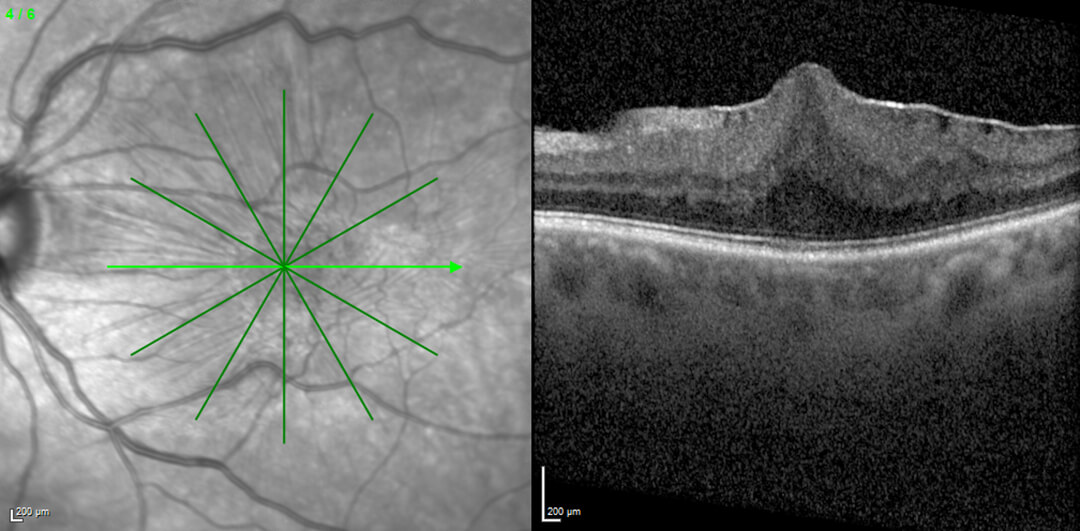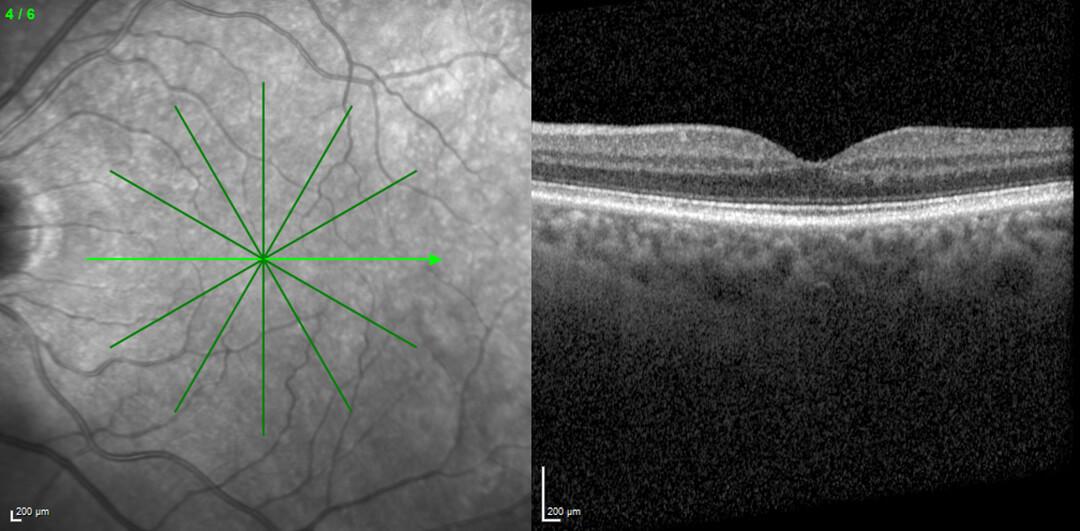Epiretinal Membrane
An epiretinal membrane, also referred to as a macular pucker or cellophane maculopathy, is a condition where a thin layer of scar tissue forms on the surface of the retina. As this scar tissue contracts, the surface of the retina becomes irregular causing distortion and decreased vision. In some instances, this progresses slowly and can be monitored. Other times, surgery may be recommended to slow progression and relieve symptoms.
Many times, patients with an epiretinal membrane have no symptoms. In these cases, epiretinal membranes are only found on routine eye exams or with a test called an OCT, or optical coherence tomography. Vision may be normal or near normal. Other times, patients may find straight lines appear curved or wavy, a symptom known as metamorphopsia.

Thin white semi-translucent membrane (ERM) distorting surface of the macula
Most of the time, epiretinal membranes are the result of an age related contraction of the vitreous gel that fills the inside of the eye, a condition known as posterior vitreous detachment. Common symptoms of a posterior vitreous detachment include floaters or flashes of light.
Other common causes of epiretinal membrane include diabetic retinopathy, retinal vascular occlusions, retinal tears, trauma, eye surgery and inflammation.
When mild and not significantly affecting vision, epiretinal membranes are simply monitored periodically for progression. When symptoms are severe, causing decreased vision, or if progression is noted, treatment may be required. Epiretinal membranes are treated with a surgery called vitrectomy, or pars plana vitrectomy. Vitrectomy is a same day surgery where the vitreous gel is removed from the eye through small incisions. Once the vitreous gel has been removed, the epiretinal membrane is carefully peeled from the surface of the macula using forceps. The eye is then filled with saline. Once the scar tissue has been removed from the retina, the tissue slowly relaxes. It may take anywhere from a few months to a year before the maximal effects of surgery are appreciated. Some residual symptoms can be expected. There are no eye drops, supplements or laser treatments for epiretinal membrane.

Cross sectional scan of the retina showing the normal retinal contour
The most serious complication of vitrectomy is infection. Infections are rare, occurring one in several thousand surgeries. About 1 in 100 patients may develop a retinal tear or retinal detachment, which may require additional surgery. All patients will develop a cataract after vitrectomy if they have not yet had one removed.
Surgery for epiretinal membrane is generally successful with improved vision and decreased symptoms after surgery.
If you have questions about epiretinal membrane or vitrectomy request a consultation with one of our surgeons today.
